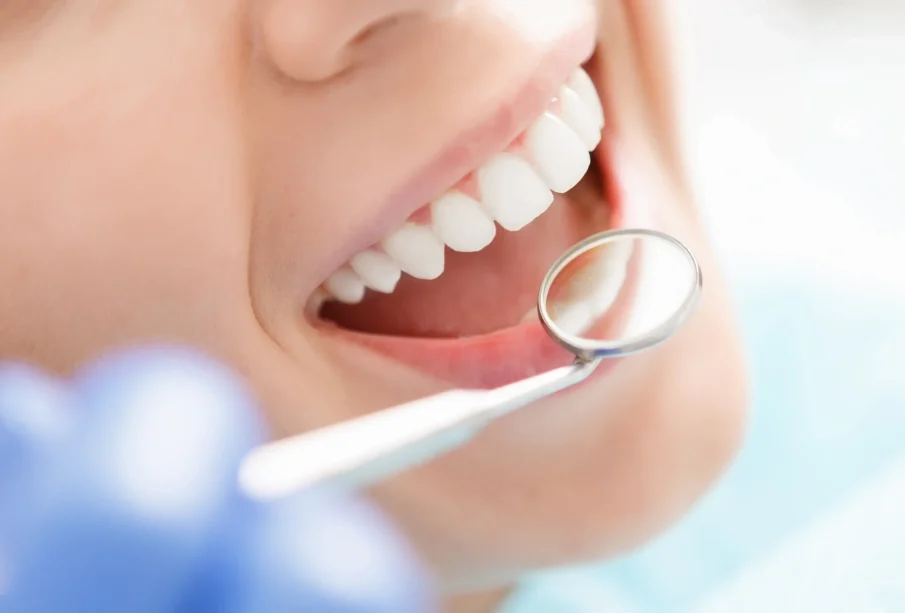GLOSSARY OF COMMON DENTAL TERMS SIMPLIFIED

Because dentists use so many medical terms, dental health can seem confusing. If you visit a dentist office near me, understanding these terms can make your experience much easier. Some of the most frequent dental jargon are explained in plain English in this easy-to-understand glossary.
Abrasion – When teeth wear down due to improper brushing methods, vigorous brushing, or excessively forceful toothpick use, this occurs. It can also occur from biting on objects often.
Abscess – A painful infection in the tooth, gums, or bone.
Amalgam – A silver-coloured material made from metals like mercury, silver, and tin, used to fill cavities.
Anesthesia – A drug that stops pain during dental treatments. Local anesthesia numbs a small area, while general anesthesia makes you unconscious.
Antibiotic – Medicine used to fight bacterial infections in the mouth.
Apex – The tip or end of a tooth root.
Bicuspid (Premolar) – Teeth between the canines and molars are used for chewing food. Adults have eight of them.
Bleaching – A treatment used to make teeth look whiter using chemicals like peroxide.
Bonding – A process in which tooth-colored materials are attached to teeth to fix chips, cracks, or gaps.
Braces – Metal or ceramic devices used to straighten crooked teeth and improve alignment.
Bridge – A dental device that fills a gap caused by missing teeth by attaching artificial teeth to nearby natural ones.
Bruxism – Grinding or clenching your teeth, often while sleeping.
Calculus (Tartar) – Hard deposits that form on teeth when plaque isn’t removed properly. It can be yellow or brown and may cause gum disease.
Canker Sore – Small, painful ulcers inside the mouth that usually heal on their own within a week.
Caries (Cavities) – Holes or decay in teeth caused by bacteria.
Crown – The visible part of a tooth or an artificial “cap” that covers a damaged tooth to restore its shape and strength.
Dentures – artificial teeth that take the place of natural teeth that are lost. They might be fixed or detachable, complete or partial.
Enamel – the tooth’s hard outer layer, which keeps it safe from decay.
Extraction – The removal of a damaged or infected tooth.
Filling – Material placed inside a cavity after decay is removed to restore the tooth.
Fluoride – A mineral that strengthens teeth and prevents decay. It’s found in toothpaste, mouth rinses, and drinking water.
Gingivitis – The first stage of gum disease, causing red, swollen gums that may bleed easily.
Implant – A small metal post placed in the jawbone to hold a replacement tooth, like a crown or bridge.
Molar – The large back teeth used for grinding food. Twelve molars, including wisdom teeth, are typically present in adults.
Plaque – A sticky layer of bacteria and food particles that forms on teeth. If not removed, it can lead to cavities and gum disease.
Root Canal – A treatment that cleans and seals the inside of a tooth when the nerve becomes infected.
Sealants – A thin, protective coating applied to the chewing surfaces of back teeth to prevent decay, especially in children.
Tartar – Hardened plaque that can only be removed by a dentist during cleaning.
TMJ (Temporomandibular Joint Disorder) – A condition that causes jaw pain and difficulty opening or closing the mouth.
Veneer – A thin layer of porcelain or resin placed on the front of teeth to improve their colour and shape.
Wisdom Teeth – The last set of molars that usually appear between ages 18 and 25. Sometimes they are removed if they cause pain or crowding.
X-rays – Dental images used to see teeth and bone structure. They aid in the detection of impacted teeth, cavities, and infections that are invisible during an examination.
Understanding these terms can make dental visits easier and help you communicate better with your dentist. Good oral health begins with knowledge and regular care.
















